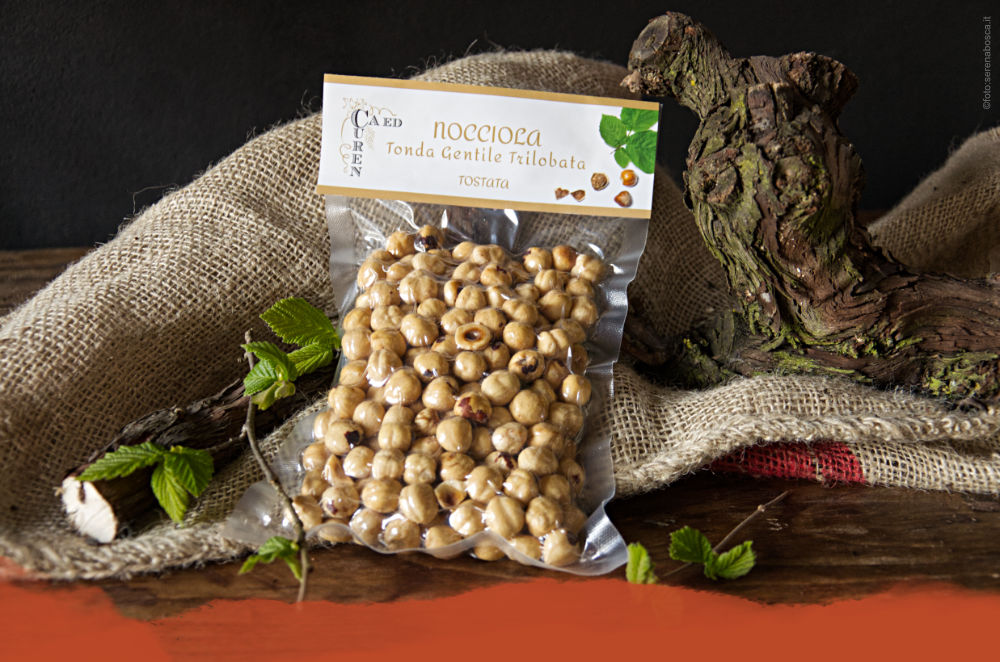Wines produced by Ca ed Curen
From the cultivation of our lands in the heart of the Langhe, we produce different types of grapes such as: Dolcetto, Moscato, Barbera, etc. For some years now we have been vinifying the grapes produced from our vineyards, obtaining a wide range of wines such as: Chardonnay, Moscato, Barbera, Dolcetto…
In our winery you can also find special wines such as L’incompreso, a still Muscat and Incontro, a rosé with unique aromas.
We believe a lot in what we do and in the quality of our products.
Discover all the wines produced by Ca and Curen and contact us for a quote or a visit to the winery, you can find all the information here.
PIEDMONT CHARDONNAY
“Noi”

GRAPE
GRAPE VARIETIES: 100% Chardonnay
Noi: this wine, so called, represent the togetherness that connects our family and the union among us. For this reason, we decided to leave our fingerprints on the wine label.
PRODUCTION TECHNOLOGY
The picked grapes are crushed and pressed. Fermented at a low temperature, left to rest for several months on its noble lees, stabilised, filtered, and bottled..
TASTING NOTES
Straw yellow colour, it gives off a flower and fruit fragrance, and above all you can taste a persistent pear aroma in your mouth.
GASTRONOMICAL COMBINATIONS
This wine matches perfectly with hors d’oeuvres, fishes, shellfish, and fresh cheese.
PIEDMONT CHARDONNAY
“Noi 2”

GRAPE
GRAPE VARIETIES: 100% Chardonnay
Noi 2: represents not only the second version of the company’s chardonnay but also the first idea of Michele and Laura together: the label was born on the style of the other Chardonnay but with their two imprints only, drawn in the number 2.
PRODUCTION TECHNOLOGY
Once harvested by hand, the grapes are pressed gently. After fermentation at controlled temperature, follows a variable aging period in barrique from year to year.
TASTING NOTES
Intense straw yellow colour, the nose shows a marked hint of exotic sweet fruit, floral, and mineral light toasted notes.
GASTRONOMICAL COMBINATIONS
It matches well with light appetizers, simple first courses, fish, shellfish, and fresh cheeses.
“L’INCOMPRESO”
Withe

GRAPE
GRAPE VARIETIES: 100% white Muscatel
L’Incompreso: obtained from Muscat grapes, this wine owes its name to the fermentation process that follows. Unlike sweet Muscat, fermentation continues until the sugars are completely consumed, resulting in a dry, still wine.
PRODUCTION TECHNOLOGY
The grapes are hand picked and softly pressed as they arrive to the cellar. After that, the wine has a controlled fermentation to keep all of its fragrances. Then it spends a pair of months on the fermentation lees to get the best scents and at the end it is stabilized, filtered and bottled.
TASTING NOTES
Straw yellow colour, intense bouquet with strong flower and fresh fruit fragrances.
GASTRONOMICAL COMBINATIONS
Perfect as aperitif, it also matches with first courses, fishes, shellfish and hazelnut desserts.
“INCONTRO”
Rosè

GRAPE
GRAPE VARIETIES: 80% Favorita, 15% Muscatel,
5% Dolcetto
lncontro: wine that takes its name from the union of different grapes: Dolcetto a red berry, the Favorita and the Moscato a white berry, which together give life to a very particular color and aroma.
PRODUCTION TECHNOLOGY
Dolcetto grapes are picked, pressed, and macerated in basin for about 12 hours. After that, we added Favorita must and selected yeast. These grapes spend a pair of months on the fermentation dregs to get the best scents; then they are stabilized, filtered, and bottled.
TASTING NOTES
Bright rosy colour, red fruits perfume and delicate taste with refined structure.
GASTRONOMICAL COMBINATIONS
It is perfect as aperitif, it also matches with first courses, shellfishes and fresh cheese.
DOLCETTO
d’ALBA
“Cent’Anni e più”

GRAPE
GRAPE VARIETIES: 100% Dolcetto
Cent’anni e più: produced from a 100-year-old vineyard that is particularly suited to yielding grapes for a structured, long-lived wine.
PRODUCTION TECHNOLOGY
The picked grapes are pressed and sent to fermentation, followed by malolactic fermentation and a period of refinement on the fine lees. Between late spring and summer, the wine is bottled.
TASTING NOTES
Intense red colour, a full-bodied structure that supports ageing, red fruits fragrance.
GASTRONOMICAL COMBINATIONS
It matches with red meats and important second courses, salted pork meats and middle seasoning cheese.
BARBERA
d’ASTI
“Ercole”

GRAPE
GRAPE VARIETIES 100% Barbera
Barbera d’Asti Ercole: wine from our cellar. I wanted to dedicate it to my father writing his name on the label.
PRODUCTION TECHNOLOGY
The grapes harvested, pressed and destemmed, they are left to macerate for one night in the tub; the next morning yes starts fermentation and, in the first 2-3 days, the peels are pushed to the bottom of the tank to obtain greater extraction of color and structure. Once the malolactic fermentation is complete, we proceed with a bâtonnage of approximately 6/8 months, after which the wine comes stabilized, filtered and bottled.
TASTING NOTES
Bright red colour, strong structure that supports ageing. Red fruits fragrance.
GASTRONOMICAL COMBINATIONS
It matches with red meats and second courses, game and salted pork meats and aged cheese.
BARBERA
d’ASTI Superiore
“Generazioni”

GRAPE
GRAPE VARIETIES 100% Barbera
Generazioni: the name we have chosen associated with the image on the label wants to convey the generational passage from father to son, we are now in the fourth generation.
PRODUCTION TECHNOLOGY
Once harvested, the grapes are pressed and leave to macerate for 24 hours in the cellar. In the first ones 3 days the peels are pushed to the bottom of the tank then followed by pumping over until the end of fermentation. Subsequently, the wine proceeds with the malolactic fermentation and refinement of 12 months in wood. At the end of this process, it is bottled and remains in the bottle for a while further period before going on sale.
TASTING NOTES
Purple-red color; the nose reveals notes of ripe red fruit such as blackberry and raspberry, withered flowers, and vanilla spices. In the mouth, it is warm and soft, quite tannic, with a balanced body on the whole.
GASTRONOMICAL COMBINATIONS
Perfect for second courses of red meat, game and well-aged cheeses.
LANGHE
NEBBIOLO
“Legami”

GRAPE
GRAPE VARIETIES 100% Nebbiolo
Legami: this is the name chosen for our Langhe Nebbiolo. The bond that unites the nebbiolo vine to our tipical soil is like the bond between grandfather and grandson: a strong, decisive and indissoluble union.
PRODUCTION TECHNOLOGY
Grapes are harvested and selected by hand, then they are pressed and start to ferment. After the first fermentation follows immediately the malolactic fermentation. At the end of the year wine is decanted and then left to rest for a good period in barrels, with periodic bâtonnage. Bottling will follow with a little rest in bottles before selling.
TASTING NOTES
It is a structured, harmonious and persistent wine. Delicately tannic with notes of vanilla, the color is intense red. Smells of blackcurrant and raspberry.
GASTRONOMICAL COMBINATIONS
This wine is suitable to accompany first courses with game sauces, the ideal companion for red and black meats both stewed and grilled. Try it with strong tasting cheeses.

“PASIENSA”
Wine obtained from dried grapes
GRAPE
GRAPE VARIETIES 100% white Muscatel
Pasiensa: the wine is called Pasiensa because it requires a lot of patience while waiting for the withering of the grapes and also why it is necessary patience to follow him into the cellar and into the sip it…
PRODUCTION TECHNOLOGY
Obtained from Moscato grapes, half in withering on the plant and half in overripe, carefully selected, the wine is pressed directly. A slow one follows fermentation of about two months, between November and late December, and a six months aging on fine lees of fermentation, followed by at least an equal period in the bottle.
TASTING NOTES
Intense straw yellow colour, wide ripened fruits ans jam bouquet, faded fruits.
GASTRONOMICAL COMBINATIONS
At best served at 16/18 with seasoned and blues cheeses, at 6/8 with dry pastries..

YOUNG GRAPPA
of Muscatel
GRAPE VARIETY OF ORIGIN AND PROVENANCE:
Muscatel – Piemonte
OLFACTORY NOTES:
fresh fruit and sage
TASTING SENSATIONS:
delicate and pleasantly aromatic
with a sweetish finish
ALCOHOL CONTENT:
42% vol
AGED
GRAPPA
of Muscatel
GRAPE VARIETY OF ORIGIN AND PROVENANCE:
Muscatel – Piemonte
OLFACTORY NOTES:
particular scents of flowers, peach,
ripe fruits and also hay
TASTING SENSATIONS:
intense, smooth and balanced grappa
ALCOHOL CONTENT:
42% vol
YOUNG GRAPPA
of Nebbiolo
GRAPE VARIETY OF ORIGIN AND PROVENANCE:
Nebbiolo – Piemonte
OLFACTORY NOTES:
Wide nose from floral to fruity
TASTING SENSATIONS:
harmonious, with great intensity
and persistence
ALCOHOL CONTENT:
42% vol
YOUNG GRAPPA
of Barbera
GRAPE VARIETY OF ORIGIN AND PROVENANCE:
Barbera – Piedmont
OLFACTORY NOTES:
Boiled must
TASTING SENSATIONS:
Dry and aggressive
ALCOHOL CONTENT:
42% vol



Hazelnut growing and production
On our farm in Piedmont grow, work and sell Hazelnuts too (“Tonda Gentile Trilobata” best quality in the world)
Come and visit the hazel groves and taste our products!
Here are all the info about what we can offer!

